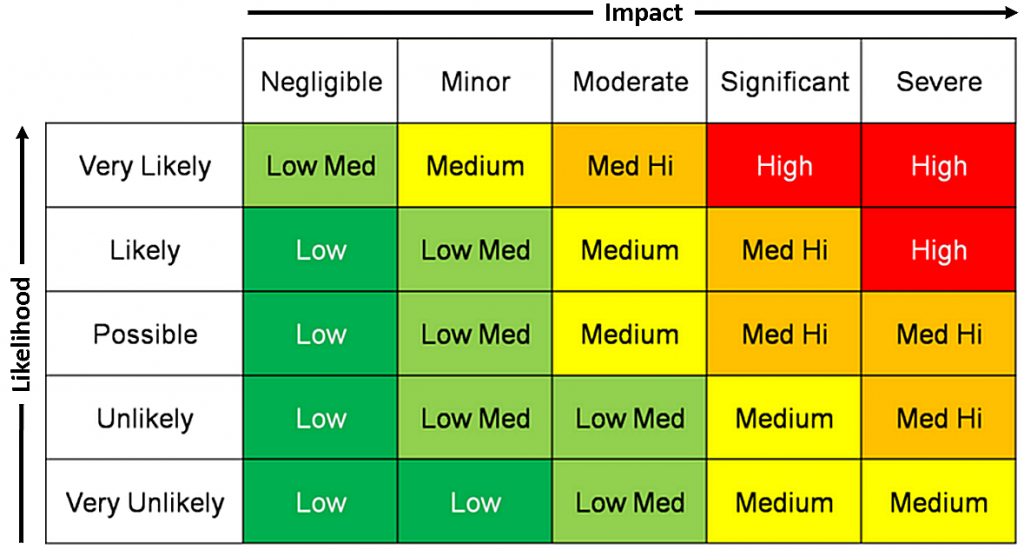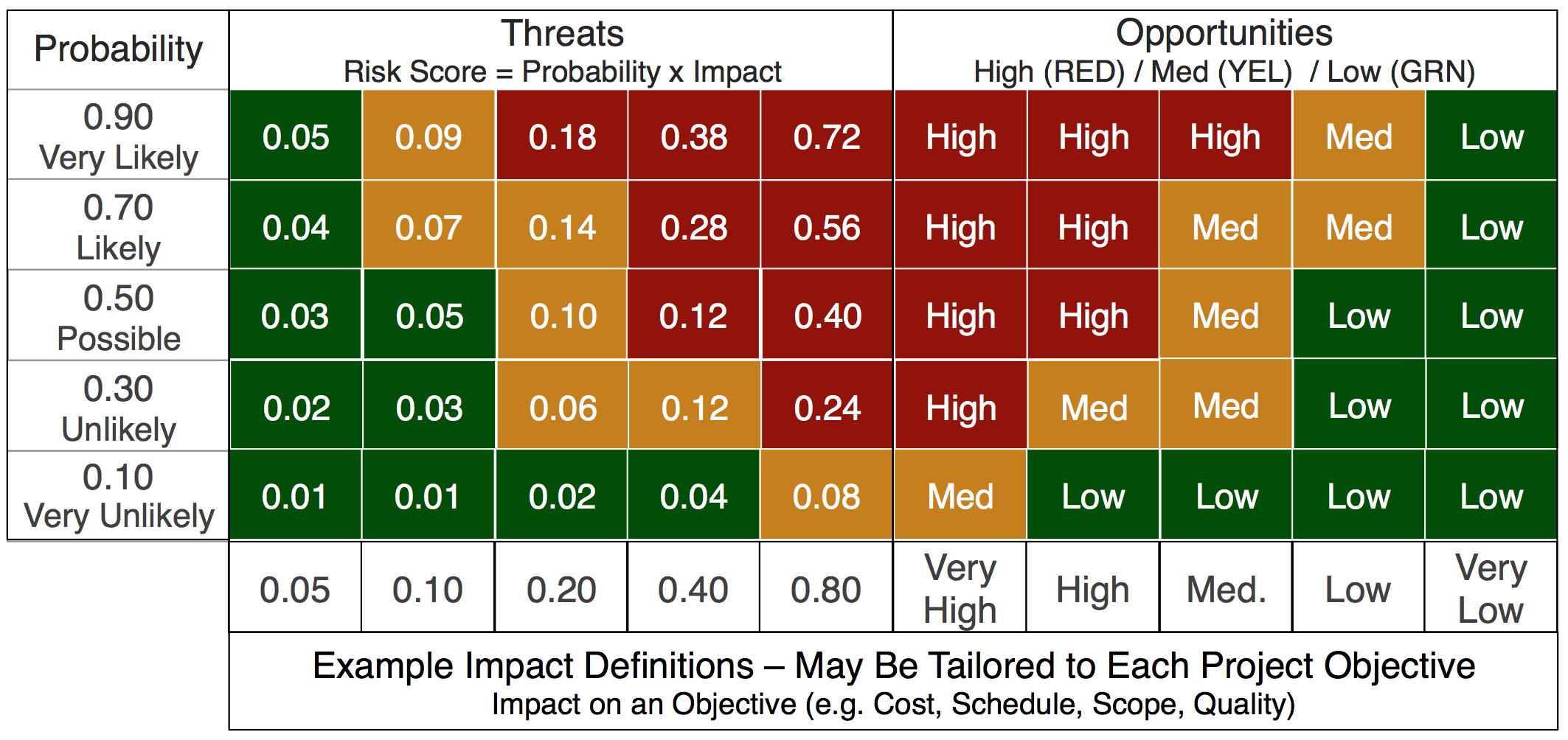
The risk matrix then plots these variables in a color-coded chart to show overall risk for different situations: Levels of probability and impact can be broken up into verbal and numerical scales like so: In simple terms, risk assessment is defined as the probability of an event multiplied by its impact.

#PROBABILITY CONSEQUENCE MATRIX HOW TO#
With that in mind, let’s take a look at how to create a probability and impact matrix that can identify exactly where best to manage risk.Ī risk matrix helps you do both, calculating risk across various outcomes to give you clear guidelines on whether risk is acceptable or unacceptable. Once that decision is made, then the next step is arguably to integrate a risk matrix. One, you need a way to quantify risk to make the best choice, and two, you need to be able to explain that choice.
#PROBABILITY CONSEQUENCE MATRIX PROFESSIONAL#
My areas of expertise are concerned with Business Process Re-engineering (BPR), IT Governance and Assurance, PMO Setup, and Business and IT Agility.I also have substantial experience strategizing ERP implementations and have been working with Oracle, SAP, Microsoft Dynamics and Odoo for the best part of my professional life.Both nationally and internationally, I’m also providing in-depth, high-caliber executive development and training in various fields, covering topics such as project planning, project management, leading teams, cultural change.I’m a passionate writer and speaker on the topics of Digital Transformation, CIO, ERP and Project Management.Two things are true when it comes to making important decisions that impact your company. We are based in Pakistan but work extensively with middle-market businesses directly in the European, Middle East and South Asia Regions, as well as through partnerships with multinational companies like yours.I have personally delivered several digital change projects across many sectors globally - including construction, technology, finance, manufacturing, warehousing, logistics, telecommunication. I am the founder of Know Your Project (KYP) IT Consulting and Training Company. For example, the risk of employee injury, which has a low likelihood but high impact, would be considered a high-priority risk. Prioritizing risks based on their overall risk score.Employee injury: likelihood 2, impact 5.Supply chain disruptions: likelihood 3, impact 4.Equipment failure: likelihood 4, impact 3.Plotting each risk on the matrix according to its likelihood and impact rating, for example:.Likelihood: 1 (very unlikely) to 5 (almost certain).Evaluating the likelihood and impact of each risk using a numerical scale, for example:.Identifying potential risks such as equipment failure, supply chain disruptions, and employee injury.An Example of Probability and Impact MatrixĪn example of using a probability and impact matrix in manufacturing could be as follows: Green condition These risks are generally fairly low in impact, probability, or both. Red condition These high-risk scores are high in impact and probability.Īmber condition (aka yellow condition) These risks are somewhat high in impact and probability. There are three common categories based on risk score: Based on the risk score, the performing organization can place the risk in differing categories to guide risk reaction. The scores within the probability-impact matrix can be referenced against the performing organization’s policies for risk reaction. Ordinal scales Identify and rank the risks with common terms, such as very high to very unlikely, or using a RAG (red, amber, green) rating to signify the risk score.Cardinal scales Identify the probability and impact on a numeric value from 0.01 (very low) to 1.00 (certain).The probability of occurrence for each individual project risk is assessed as well as its impact on one or more project objectives if it does occur, using definitions of probability and impact for the project as specified in the risk management plan. This matrix specifies combinations of probability and impact that allow individual project risks to be divided into priority groups.

It uses a numerical scale to rate the likelihood and impact of each risk, which can then be used to prioritize risks and develop strategies to mitigate or manage them. A probability and impact matrix is a tool used in qualitative risk analysis to evaluate the likelihood and impact of identified risks.


 0 kommentar(er)
0 kommentar(er)
